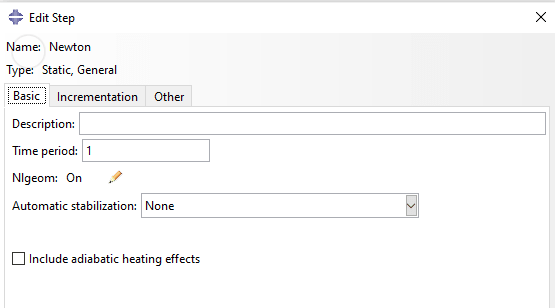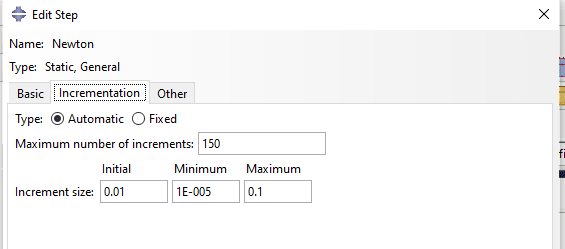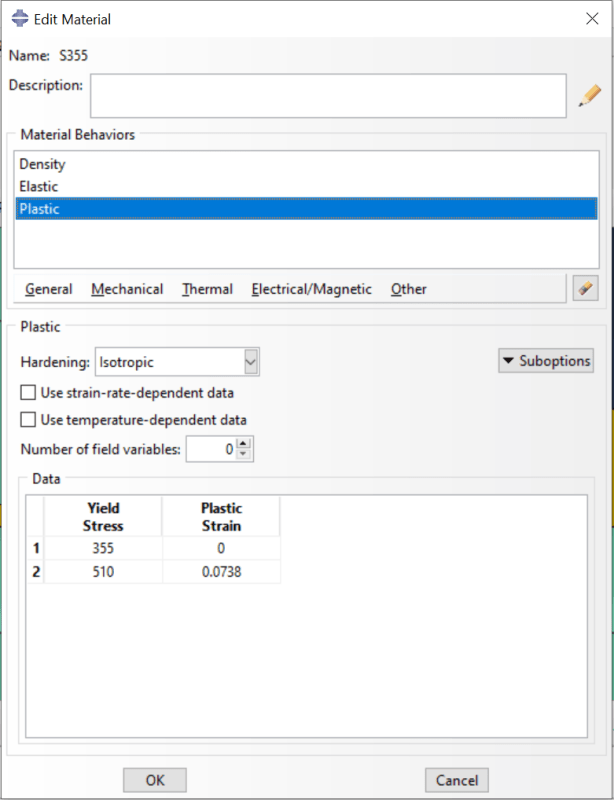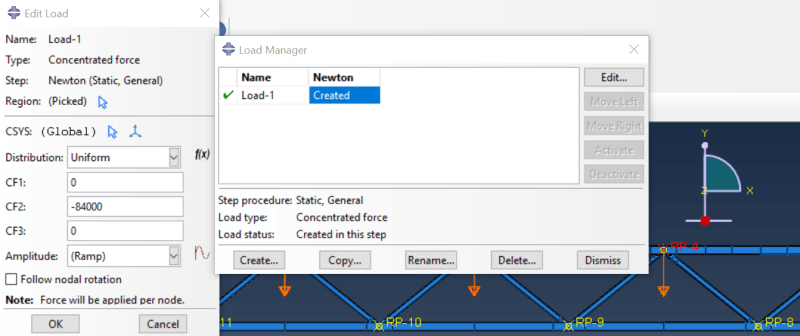Hello everyone!
I am analyzing an SHS steel truss, simply supported, with concentrated forces (in Newtons) applied in the top nodes. The loads are applied in reference points that are constrained, type coupling, to the section of the chord. All the top nodes have a boundary condition to prevent out-of-plane displacements. I'm using a general static analysis and a nonlinear material.
Since what I want to achieve is the force-displacement curve of each of the truss nodes to analyze the joint's behavior, it's important to study them above the yield limit. The problem was after increasing the load from 84 N to 200 N the vertical displacement(U2), as well as TF2, were the same! Is this occurring because of the type of analysis I used? Should I switch to a Riks method?
I will leave some pictures for a better understatement.
Thanks in advance.





I am analyzing an SHS steel truss, simply supported, with concentrated forces (in Newtons) applied in the top nodes. The loads are applied in reference points that are constrained, type coupling, to the section of the chord. All the top nodes have a boundary condition to prevent out-of-plane displacements. I'm using a general static analysis and a nonlinear material.
Since what I want to achieve is the force-displacement curve of each of the truss nodes to analyze the joint's behavior, it's important to study them above the yield limit. The problem was after increasing the load from 84 N to 200 N the vertical displacement(U2), as well as TF2, were the same! Is this occurring because of the type of analysis I used? Should I switch to a Riks method?
I will leave some pictures for a better understatement.
Thanks in advance.





